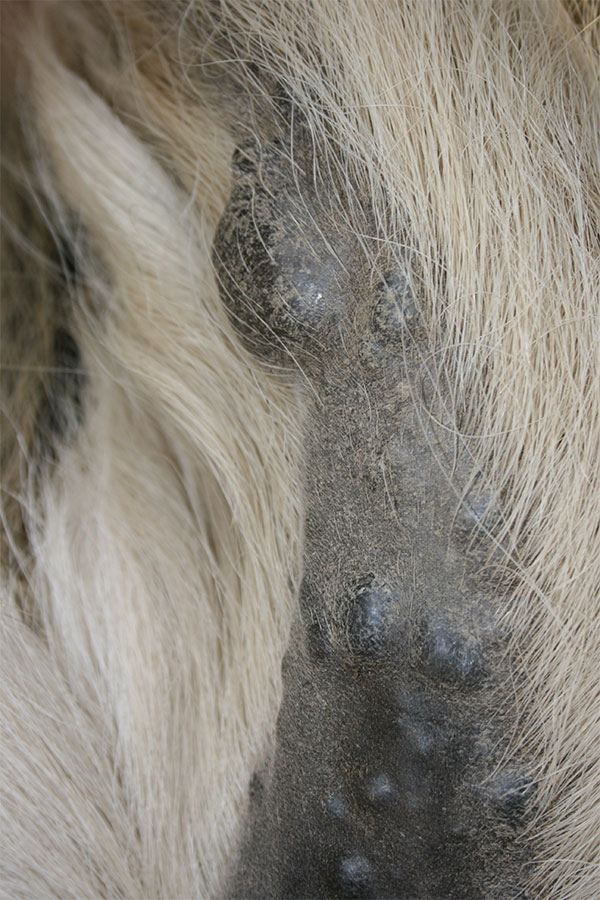
Melanoma
Equine melanomas affect roughly 80% of grey horses over the age of 15 years. In horses, melanomas are characterized by tumors that commonly develop underneath the tail and, in severe cases, require surgical removal. The two most common types of melanomas are dermal melanomas, which present as small individual tumors, and dermal melanomatosis, which present as individual tumors that merge together creating a large mass (Reed, S., Bayly, W., Sellon, D. et al. 2018).
Recent studies have revealed that the genetic mutation causing horses to grey with age is due to a 4.6-kb triplication in the syntaxin-17 (STX17) gene (Nowacka-Woszuk, J., Mackowski, M. et al. 2021). While it is known that grey horses are predisposed to melanoma development, the underlying genetic mutation that causes tumor growth in most grey horses remains unknown.
Like most cancers, the development of melanoma is thought to be polygenic and the STX17 mutation is just one of many mutations leading up to this disease. Given that, our lab is studying melanoma development in grey Connemara ponies to try and identify additional genetic factors that would explain melanoma development in the majority of grey horses.
